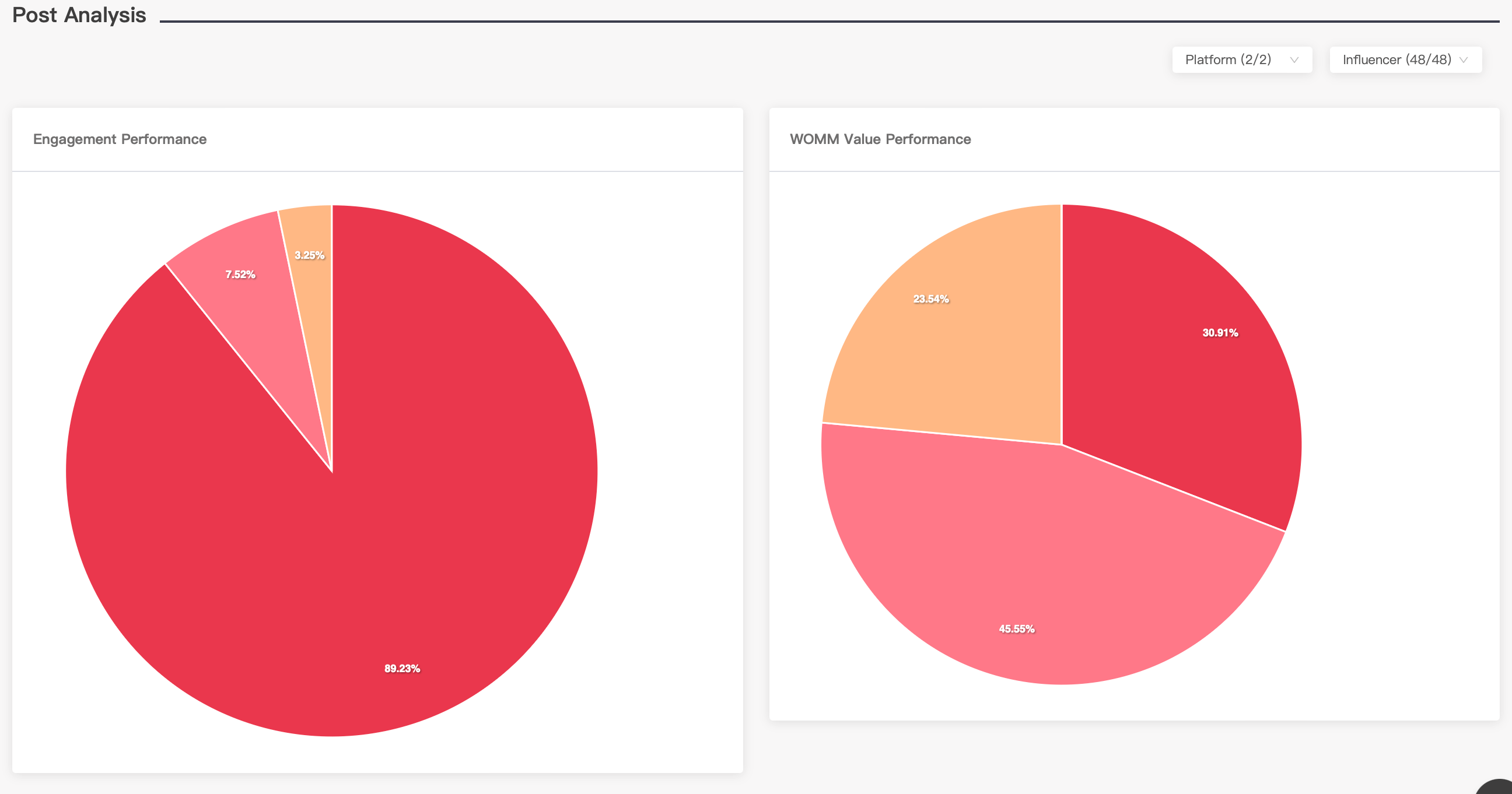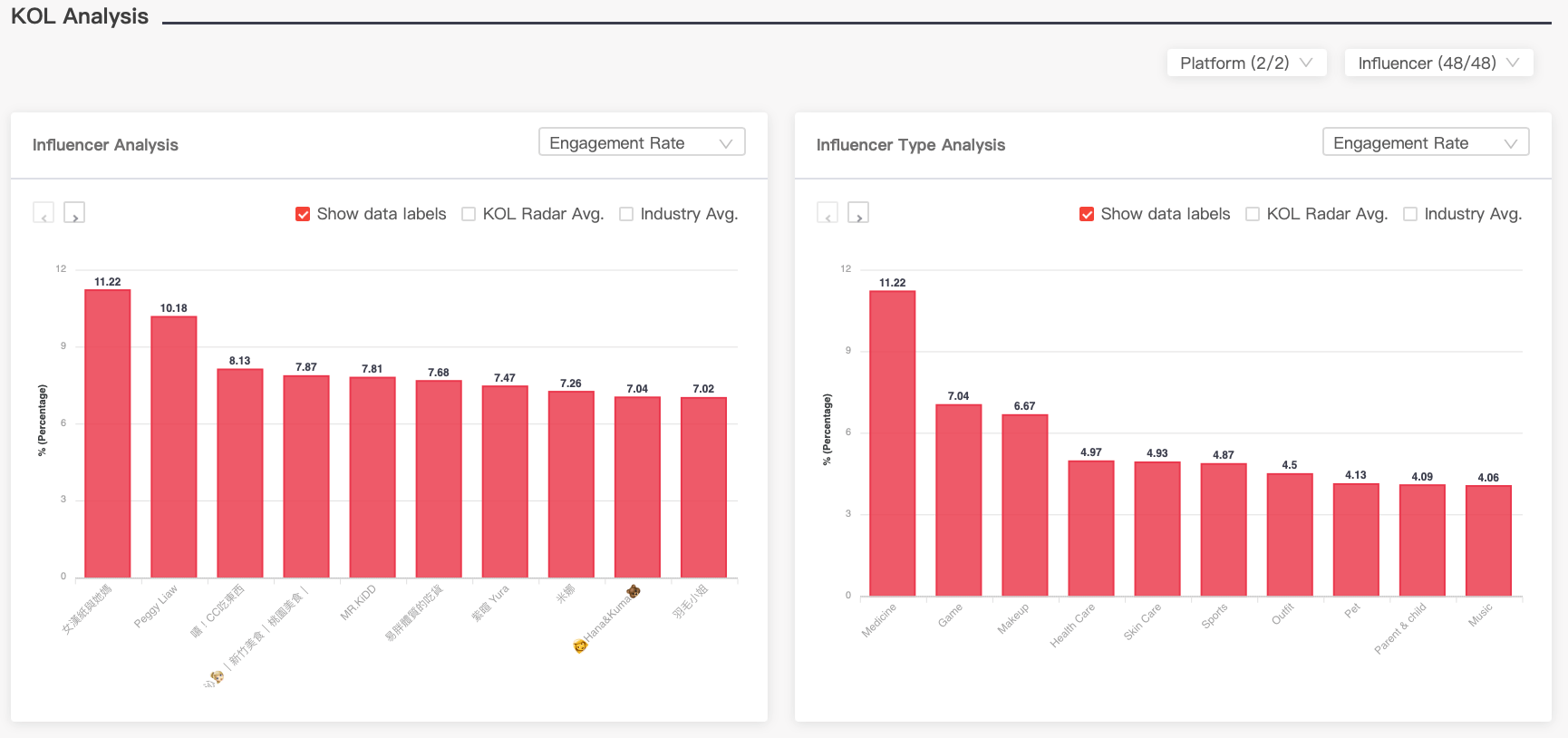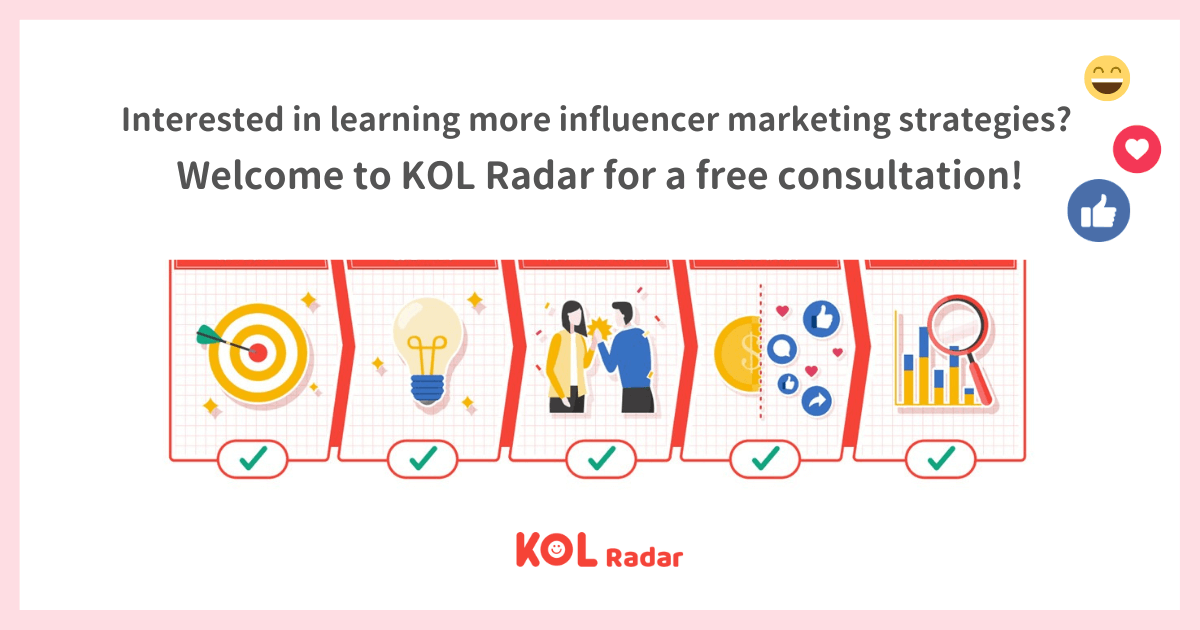According to research by We Are Social, the global impact of the COVID-19 pandemic has led to a surge in the number of people spending time and engaging online. Therefore, more brands are choosing to invest in influencer marketing through social media channels.

Source:We Are Social
When it comes to tracking the effectiveness of “Influencer marketing”, there are numerous metrics for measuring marketing success. However, this presents another challenge — “How can I analyze all this data comprehensively?” Often, at the conclusion of a campaign, marketers find themselves spending considerable time gathering data and tracking the performance of Key Opinion Leaders (KOLs). Yet, this process is usually labor-intensive and time-consuming and has to be updated manually, resulting in significant wastage of time and energy for companies, yielding less than optimal outcomes.
To address the challenges in influencer marketing performance tracking, KOL Radar presents an upgraded function – the “Deep Report.” This advanced function enables brands to interpret data effectively and accurately. Built upon an exclusive database comprising hundreds of thousands of influencer profiles, the platform utilizes specialized AI crawling techniques to effectively gather and consolidate various key performance indicators for influencer collaborations and community interactions. It automatically compiles professional charts, facilitating data-driven analysis of the effectiveness of the influencer community. Moreover, it assists brands in optimizing their overall marketing Standard Operating Procedures (SOPs).
Through the panoramic data insights of the Deep Report, marketers can precisely assess the effectiveness of a marketing campaign. Now, by joining the KOL Radar influencer marketing service, you can enjoy exclusive access to the Deep Report function!
Effortless Campaign Reports: Instant Visibility with a Dashboard!
KOL Radar‘s “Deep Report” features a dedicated “Score Card” section, gathering data from business and KOL collaborations by leveraging exclusive AI crawling technology. The Deep Report from KOL Radar automatically retrieves real-time data and calculates effectiveness metrics of content such as posts, live streams, and videos, offering marketers a simple, swift, and accurate report.
Within the “Deep Report,” the Score Card encompasses the most common “interactive data” metrics (likes, comments, shares), aiding brands in assessing the engagement of KOLs’ within their community. It automatically calculates “KOL’s effectiveness data,” including interaction rates and view rates, enabling marketers to grasp a KOL’s performance. Moreover, if the brand provides project budgets, the Deep Report can automatically calculate “conversion data,” including CPE (Cost Per Engagement), CPV (Cost Per View), CPEV (Cost Per Engagement and View), and sentiment value. This assists brands in understanding the advertising benefits gained from the campaign, automating performance tracking for all collaborating KOLs, and offering real-time data insights.

Source:KOL Radar (Images for illustration purposes, not actual data)
Nano influencers are currently trending, and an increasing number of brands and businesses choose to collaborate with them, utilizing the “people-powered strategy” to generate exceptionally high levels of exposure and branding. However, the workload and pressure at the end of such collaborations have become overwhelming for marketers.
In the past, when collaborating with major influencers, a brand representative only needed to manage a small number of KOLs. Yet, when partnering with nano influencers, a single representative could be responsible for dozens, even hundreds of KOLs. Tracking community interaction data at the conclusion of every project becomes even more difficult, requiring manual input of data that cannot be updated in real-time, hampering the accuracy of performance metrics.
Consequently, when a multitude of collaborative projects run simultaneously, traditional manual efforts fall short of efficiently tracking all of them. Even worse, this could potentially overwhelm a company’s human resource capacity, leading to a human resource crisis.
Through KOL Radar’s automated data compilation in the “Score Card,” brands can reduce the human resource costs to manage influencer marketing projects, and produce an efficient marketing SOP. Additionally, the built-in “data visualization” automated charts within the Deep Report give clarity when analyzing data. By obtaining the most current and accurate project data, more analysis can be done to optimize future influencer marketing strategies and the selection of influencers.

KOL Radar provides visualized charts for data effectiveness (Images for illustration purposes, not actual data)
Gaining Insights: Big Data Benchmarking for Comprehensive Evaluation
Once all the interaction data is acquired, where should one begin to assess the performance of KOL collaborations? In the past, marketers struggled to leverage the overwhelming amount of data by solely relying on past experience to evaluate the effectiveness of influencer marketing projects. This often led to inaccuracies in performance assessment.
With a database of over 10,000 influencer profiles, KOL Radar’s Deep Report automatically computes overall benchmarks for brands. These benchmarks include the “KOL Radar Average,” which represents the overall average interaction rate of KOLs within the KOL Radar database, and the “Industry Average,” which differentiates KOL’s effectiveness based on the brand’s industry category.

Source:KOL Radar (Images for illustration purposes, not actual data)
It’s worth noting that the “Industry Average” benchmark is supplemented by two additional benchmark dimensions provided by KOL Radar: “Average by KOL Type” and “Custom.” Through KOL Radar’s database, data is statistically analyzed based on various “community labels,” serving as benchmarks for average collaboration effectiveness.
For instance, in the Deep Report, if a brand is promoting a “hydrating serum” through KOLs, the “Average by KOL Type” benchmark can be set as “Skincare.” By using the “average performance of skincare-focused KOL posts” as the benchmark, it allows a comparison of the effectiveness of a KOL’s community engagement metrics for the brand’s intended collaboration for “hydrating serums” with other KOLs who typically focus on skincare content.

Source: KOL Radar (Images for illustration purposes, not actual data)
Moreover, marketers can also customize input for target effectiveness based on past industry collaboration experiences. This can encompass interactive metrics such as “interaction rate,” “view rate,” “CPE,” “CPV,” “CPEV,” and other engagement indicators, serving as benchmarks for the project’s effectiveness. This flexible benchmark setting enables marketers to integrate past experiences and devise strategies that match with industry-specific overall average indicators.
KOL Radar‘s Deep Report utilizes advanced AI technology to accurately capture current and real-time data, providing visualized charts to view the performance of each KOL in project collaborations. Furthermore, leveraging an extensive influencer database, it calculates industry benchmarks that offer a profound understanding of overall influencer marketing project operations. This serves as a guide for refining future optimization strategies.
Precise Social Media Monitoring: Target Audience Analysis via Comment Keyword Word Clouds
KOL Radar‘s “Deep Report” utilizes exclusive AI crawling technology to retrieve audience comments on influencer posts and compile them into a “Comment Keyword Word Cloud” chart. Through this chart, marketers can effectively identify the most frequent and common words in fan comments. This allows marketers to grasp a KOL’s audience preferences. Beyond evaluating whether KOLs have successfully generated “effective” community interactions for products, it provides a deeper analysis of the preferences of a KOL’s audience and provides insights into a brand’s reputation within the community.

Source:KOL Radar (Images for illustration purposes, not actual data)
By utilizing the “Comment keyword Cloud” of KOL Radar, brands can effectively observe, at the conclusion of campaigns, whether there is any significant presence of keywords related to the “product” or “brand” in fan comments. This data-driven approach empowers brands to gauge the influence and impact of collaborating with KOLs and by extension, their fans. It provides a profound understanding of whether the chosen KOLs have successfully assisted the brand in generating product discussions and engagement within the online community.
Using the aforementioned “hydrating serum” example, let’s assume that, at the conclusion of the marketing campaign, the brand notices through the “Comment Keyword Cloud” that the most frequently mentioned keywords are “hydrating,” “want to buy,” and “effective.” This indicates that the KOL has successfully sparked interest and discussions around the product.
Conversely, if words unrelated to the product like “dog,” “goddess,” or “happy birthday” appear, it suggests that the KOL didn’t effectively resonate with the community or initiate relevant discussions. The comment keyword cloud provides a direct reflection of community feedback for the brand’s influencer marketing efforts, allowing brands to tailor strategies based on audience responses.
By using the overarching industry standards as a reference, you can then evaluate the effectiveness of KOL collaborations and accurately determine whether the performance of your chosen influencers aligns with market benchmarks. With the comprehensive measurement standards provided by KOL Radar’s Deep Report, brands can not only assess the effectiveness of collaborations more accurately, they can also reduce influencer project manpower costs and mitigate the risk of misjudging KOL performance as subpar.
KOL Radar leverages its exclusive AI-driven influencer database to capture real-time community engagement data. From the initial stages of crafting an effective influencer marketing strategy and idetifying suitable influencer matches from the automated effectiveness tracking provided by the Deep Report at the conclusion of projects, every step relies on data analysis and assessment. This enables a comprehensive data-driven execution of influencer marketing, ensuring its full-scale integration into the process.
To learn more detailed information, feel free to inquire with KOL Radar for a complimentary consultation! KOL Radar!

To learn more detailed information, feel free to inquire with KOL Radar for a complimentary consultation! KOL Radar!
➤ This article may not be reproduced, reprinted, broadcasted, or publicly transmitted without permission.



